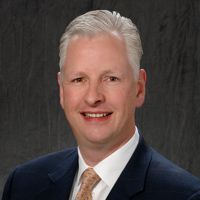The Trump Tax Plan: Where’s the Beef?
The lack of details in President Trump’s just-announced tax plan raises more questions than answers, but one thing's evident: The proposal shows the hallmarks of “trickle-down economics.”


On Wednesday, April 26, President Trump released his long-awaited tax proposal … well, sort of. The one-page outline provided by the White House should not be viewed as a plan, rather we should see it as a beginning of negotiations (after all Mr. Trump has a self-proclaimed love for negotiations).
Here is some of what we know so far:
- The plan would call for a reduction in tax brackets from the current seven to three: 10%, 25% and 30%.
- It would eliminate most line-item deductions — including those for state and local taxes, sales taxes, gambling losses and moving expense — with the noted exceptions of the mortgage interest deduction and charitable gift deduction.
- It would significantly raise the standard deduction, which Americans can use to reduce their taxable incomes.
- And on a corporate level, President Trump is following through on his campaign pledge to greatly reduce corporate taxes – from 35% down to 15% — as well as offering a “one-time” opportunity for corporations to repatriate offshore cash to the United States at a 10% tax rate.
What is glaringly missing from this outline are the revenue offsets, i.e. how we would pay for all of this. Unless the plan includes specific revenue-generating items, one has to assume that this “plan” is, in essence, one giant turbo-charged trickle-down economics plan (a long favorite economic theory among Republicans).
From just $107.88 $24.99 for Kiplinger Personal Finance
Become a smarter, better informed investor. Subscribe from just $107.88 $24.99, plus get up to 4 Special Issues

Sign up for Kiplinger’s Free Newsletters
Profit and prosper with the best of expert advice on investing, taxes, retirement, personal finance and more - straight to your e-mail.
Profit and prosper with the best of expert advice - straight to your e-mail.
On the personal income tax front, it is hard to argue with the need for a simpler more straightforward tax code (although I suspect the good folks at H&R Block (ticker: HRB) and Jackson Hewitt will protest loudly). Eliminating or significantly restructuring the convoluted line-item deduction mechanism and alternative minimum tax is more than needed. And in theory, the end result could be a “wash” for many as line-item deductions are eliminated in favor of a lower tax bracket. The devil will be in the details, and there aren’t any of these yet (on Thursday morning White House Budget Chief Mick Mulvaney said the vagueness of the proposal is intentional).
On the corporate side, the issues and shortsightedness are much clearer, and have a historical track record. In 2004 Congress, at the urging of then President George W. Bush, passed the repatriation tax holiday, which brought back some $312 billion into the United States. Predictably, very little of this money was utilized to create jobs, as investment or capital expenditure. Rather, it was used for share buybacks, increased and one-time dividends and generally for the benefit of shareholders.
President Trump’s proposal seems to follow a similar path and it offers flawed expectations that this time around corporations will act in the country’s best interest, as opposed to their own and their shareholders’.
Perhaps if President Trump attaches certain investment mandates or penalties for misappropriating the funds the plan could be very beneficial to our economy. But as it stands now, the premise of trickle-down economics is unlikely to have results that differ from previous engagements of this policy.
It’s impossible to give President Trump a “grade” on his tax proposal, as it isn’t much of a proposal at all yet. However, from a market and investor perspective, it is one more piece of “hope and good news” that could help keep this bull market alive and drive stocks materially higher.
Profit and prosper with the best of Kiplinger's advice on investing, taxes, retirement, personal finance and much more. Delivered daily. Enter your email in the box and click Sign Me Up.

Oliver Pursche is the Chief Market Strategist for Bruderman Asset Management, an SEC-registered investment advisory firm with over $1 billion in assets under management and an additional $400 million under advisement through its affiliated broker dealer, Bruderman Brothers, LLC. Pursche is a recognized authority on global affairs and investment policy, as well as a regular contributor on CNBC, Bloomberg and Fox Business. Additionally, he is a monthly contributing columnist for Forbes and Kiplinger.com, a member of the Harvard Business Review Advisory Council and a monthly participant of the NY Federal Reserve Bank Business Leaders Survey, and the author of "Immigrants: The Economic Force at our Door."
-
 7 Tax Blunders to Avoid in Your First Year of Retirement
7 Tax Blunders to Avoid in Your First Year of RetirementA business-as-usual approach to taxes in the first year of retirement can lead to silly trip-ups that erode your nest egg. Here are seven common goofs to avoid.
-
 How to Plan for Social Security in 2026's Changing Landscape
How to Plan for Social Security in 2026's Changing LandscapeNot understanding how the upcoming changes in 2026 might affect you could put your financial security in retirement at risk. This is what you need to know.
-
 10 Cheapest Places to Live in Washington
10 Cheapest Places to Live in WashingtonProperty Tax Is Washington your go-to ski destination? These counties combine no income tax with the lowest property tax bills in the state.
-
 7 Tax Blunders to Avoid in Your First Year of Retirement, From a Seasoned Financial Planner
7 Tax Blunders to Avoid in Your First Year of Retirement, From a Seasoned Financial PlannerA business-as-usual approach to taxes in the first year of retirement can lead to silly trip-ups that erode your nest egg. Here are seven common goofs to avoid.
-
 How to Plan for Social Security in 2026's Changing Landscape, From a Financial Professional
How to Plan for Social Security in 2026's Changing Landscape, From a Financial ProfessionalNot understanding how the upcoming changes in 2026 might affect you could put your financial security in retirement at risk. This is what you need to know.
-
 6 Overlooked Areas That Can Make or Break Your Retirement, From a Retirement Adviser
6 Overlooked Areas That Can Make or Break Your Retirement, From a Retirement AdviserIf you're heading into retirement with scattered and uncertain plans, distilling them into these six areas can ensure you thrive in later life.
-
 I'm a Wealth Adviser: These Are the 7 Risks Your Retirement Plan Should Address
I'm a Wealth Adviser: These Are the 7 Risks Your Retirement Plan Should AddressYour retirement needs to be able to withstand several major threats, including inflation, longevity, long-term care costs, market swings and more.
-
 High-Net-Worth Retirees: Don't Overlook These Benefits of Social Security
High-Net-Worth Retirees: Don't Overlook These Benefits of Social SecurityWealthy retirees often overlook Social Security. But timed properly, it can drive tax efficiency, keep Medicare costs in check and strengthen your legacy.
-
 Do You Have an Insurance Coverage Gap for Your Valuables? You May Be Surprised to Learn You Do
Do You Have an Insurance Coverage Gap for Your Valuables? You May Be Surprised to Learn You DoStandard homeowners insurance usually has strict limits on high-value items, so you should formally "schedule" these valuable possessions with your insurer.
-
 8 Practical Ways to Declutter Your Life in 2026: A Retirement 'Non-Resolution' Checklist
8 Practical Ways to Declutter Your Life in 2026: A Retirement 'Non-Resolution' ChecklistHere's how to stop wasting your energy on things that don't enhance your new chapter and focus on the things that do.
-
 To Retire Rich, Stop Chasing Huge Returns and Do This Instead, Courtesy of a Financial Planner
To Retire Rich, Stop Chasing Huge Returns and Do This Instead, Courtesy of a Financial PlannerSaving a large percentage of your income, minimizing taxes and keeping spending in check can offer a more realistic path to retiring rich.